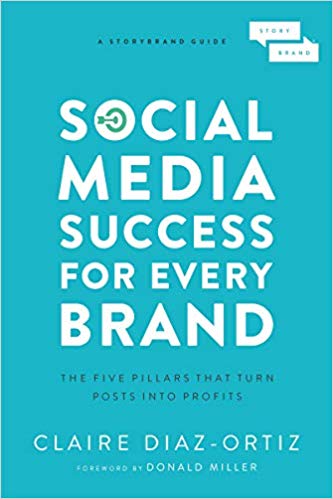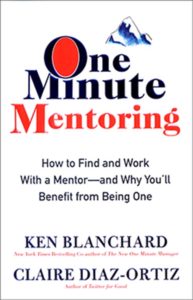When Gina Amaro Rudan went blind following routine eye surgery, she first crumbled into a ball. And then she got up. Although her blindness proved temporary, the clarity she gained during that dark time was anything but.
Ultimately, the experience led her to quit her job and embrace a profound insight that her time without sight had brought forth. “That insight was the need for creative freedom. Freedom to think, to create, to write, to speak, to yell, to make change and to begin to live the life I had always intended for myself,” Rudan says. Her journey led her to write a book, Practical Genius, and ultimately find work she loves as a cultural Alchemist at X, the moonshot factory. These days her conviction that “genius is not a gift, it’s a choice you make” is one of the key lessons she regularly inspires others with.
Her journey from temporary blindness to career enlightenment should not be a surprise to students of innovation. Researchers and practitioners alike have inherently known an important and yet unspoken truth.
It is key in Greek mythology. It is reflected in Joseph Campbell’s The Hero’s Journey. It is the story we know in our bones.
The best stories happen when resilience is not only demanded but required.
The best stories happen when resilience is not only demanded but required.
And so do the best innovations.
Resilience innovation, as I call it, is the innovation that rises out of failure, setback or hardship.
Resilience innovation is the innovation that rises out of failure, setback or hardship.
I was driving with my husband to visit a bedridden friend when the realization struck. It was late in my friend’s pregnancy, and she was bored and uncomfortable on bedrest, stuck in her mother’s house unable to work as she waited for the baby to come. As we drove he put on a song by The Band, The Night They Drove Old Dixie Down, and told me their story.
In 1966, The Band (then called The Hawks) was delivered a devastating blow when the singer they backed, Bob Dylan, crashed his motorcycle and canceled all his upcoming tour dates to recuperate. As Drummer Levon Helm said in his memoir, The Wheel’s On Fire, “We didn’t know what to do. We were road musicians without a road to go on. We still wanted to record, so we started looking for a place to rehearse some music.”
They ended up in “Big Pink”, a Salmon-colored split-level in the Catskills near where Dylan resided. Bassist Robbie Robertson had someone check out the prospects of recording in the basement. The guy told him, “Well this is a disaster. This is the worst situation. You have a cement floor, you have cinderblock walls, and you have a big metal furnace in here. These are all of the things that you can’t have if you’re trying to record something…you can’t do this – it won’t work. You’ll listen to it and you’ll be depressed. Your music will sound so bad that you’ll never want to record again.”(citation)
They had already signed the lease.
What happened that year was nothing short of revolutionary. As Sid Griffin says in Bob Dylan, The Band, and the Basement Tapes, “any barroom musicologist could make an argument for the entire Americana/No Depression/Alt Country scene beginning right there in Woodstock in the first half of ’67.” (citation) The landmark album, Music from the Big Pink, and the larger collection of 100+ songs recorded that make up The Basement Tapes not only established Dylan for “reinventing an alternative folk music for America” and reinforced “his timelessness as an artist.”(citation) It also catapulted The Band to the world’s stage.
Out of the darkness came the light. They fell down, to get back up. The Phoenix rising from the ash of disappointment. They innovated.
Resilience innovation, I thought.
Perhaps it was the thing I needed to believe.
It had been a bad year.
After a high-risk pregnancy, I had given birth to twins 2.5 months early. My boys spent two months in the hospital in my home in Argentina growing stronger as my father in law got sicker, ultimately passing away. My husband and I were each in the midst of career transitions. I took it all quite hard, even writing a letter to the worst year of my life about what I had learned. I remember saying to myself, over and over, that what I most needed was to rely upon resilience.
It turns out I am not alone.
It has been a year since I began to talk to companies and their leaders about their own experiences of resilience and how it has informed innovation. I have cast a net far and wide, using the practice of writer Susan Cain to “spend a year or two just walking around the world looking at everything through the lens of that thesis.” In other words, I have courted life, and I have taken lots of notes.
In that time I’ve heard about a shoe factory in China who abruptly had to move production to Taiwan when the British handed over Hong Kong, an unemployed businessman in Argentina who had no job but thousands of business cards he had stored up over the years, and a startup founder in the USA facing a Series A raise who needed to completely rehaul her business model to make it work again. I’ve seen how venture capitalists in emerging markets can innovate resiliently when they look beyond the low hanging fruit, and why personal heartbreak is a catalyst to the femtech revolution.
Here are a few things I have learned:
- Not all innovation rises from resilience, and not all resilience leads to innovation.
- Resilience innovation is something many leaders and organizations believe they have. Few actually do.
- Resilience innovation requires enduring unsought hardship. Most of us do not yearn to pass through the fire.
- Resilience innovation creates long-term scars. When Cinderella became a Princess she still carried ashes in her name.
- Emerging markets suggest a greater trend towards resilience innovation in organizations and individuals.
- There are a myriad of proven ways to increase resilience, both for individuals and organizations. Adam Grant and Sheryl Sandberg’s Option B: Facing Adversity, Building Resilience, and Finding Joy is a primer. As Sandberg says about one’s ability to transform on a personal level, “Let me fall if I must fall. The one I become will catch me.”
Since I am an innovator trained in both technology and anthropology, it has been an exciting journey of discovery. And here’s the big thing: I want to learn more.
As Angela Duckworth, groundbreaking author of Grit: The Power of Passion and Perseverence, says, “Nobody wants to show you the hours and hours of becoming. They’d rather show the highlight of what they’ve become.”
I’d love to see your hours of becoming.
Resilient innovators, one and all.
If you have a story to share about how resilience has informed innovation in your business, I’m listening.
How have you used resilience in your organization or in your life as a leader to drive innovation?
Get in touch here, join the conversation on the original post on my LinkedIn Influencer blog, or leave a comment below.




